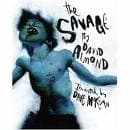
David Almond, The Savage
Value For Money
David Almond, The Savage
When you purchase through links on our site, we may earn an affiliate commission. Here's how it works.

User Reviews
Value For Money
Rereading This Marvellous Tale Last Night I Was On
Rereading this marvellous tale last night I was once more made aware of the transformative power of story telling. The central character, Blue, begins to write his 'Savage' out when his father dies and a local bully named Hopper renews his systematic cruelty towards him. Rejecting the 'feelings' diary' approach advocated by his school counsellor, Mrs Molloy, Blue 'ripped up all that stuff about myself, got an old notebook and started scribbling...' The 'Savage' lives 'in a cave under the rooined chapel.' Such a habitat is suggestive of primitive freedom as well as the possibly poignant decay of spiritual coordinates and belief. The creation of a 'truely wild' Savage self, unbound by convention and lawfulness, privileges primal self expression, memorably represented in the text through the fusion of black, green and blue illustrations which capture the abject territory of raging grief, seemingly displaced onto the Savage character via Blue's writing. The impotency of loss seems cathartically released through the intense physicality of the Savage's visceral rage; his body is distorted through a prowling combination of anger and fear, compassionate curiousity and barely contained violence. Grief makes us outsiders, makes us emotionally abject, as we rail against the singularity and arbitrariness of the 'death day' of those we love, and our imploding anger that they have deserted us somehow and we are left in a spectre like world of wilderness and tears.
Almond's protagonist Blue externalises his emotional catastrophe through the creation of the Savage, discovering a power and agency which his conventional self has felt deprived of. The Savage seems a mixture of vigilante and pilgrim as he leaves his wilderness home and goes on a quest to right the wrongs the bully Hopper has committed. The drama and release of this quest of course is still far from righting the profound anger of Blue with a world that has wrenched his father away from him without warning or care. Yet Almond's representation of such a quest still offers some sense of liberation and release. Indeed the privileging of the 'smell' of the 'stinkin' Hopper connects the reader with the child Blue's instinctive knowledge that Hopper's wrongfulness has an ugly scent. He is literally in a state of degradation. And then this confrontation unites the two figures, writer and creation. For Blue's Savage cannot transgress the ultimate moral law. He cannot kill Hopper., because Blue cannot kill Hopper. It is wrong whatever Hopper's sin. The Savage can injure him and he can reveal his savage self ritualistically clad in ' dog skin and chicken feathers'and then he can spit in his face. And then, in a beautiful spiritual shift, compassionately recognising the need for the Savage to be reconcilied with a world beyond rage and the 'rooined chapel' he 'danced like Jess had done in the woods that day and his waved his ax round his hed in triumf.'
I found this review very helpful because...I have been reading a few reviews on the Savage, and this is the first to really convey what the book is all about, to describe it clearly and with empathy, to not be afraid to draw out what is really going on.
Q&A
There are no questions yet. Be the first to ask a question.